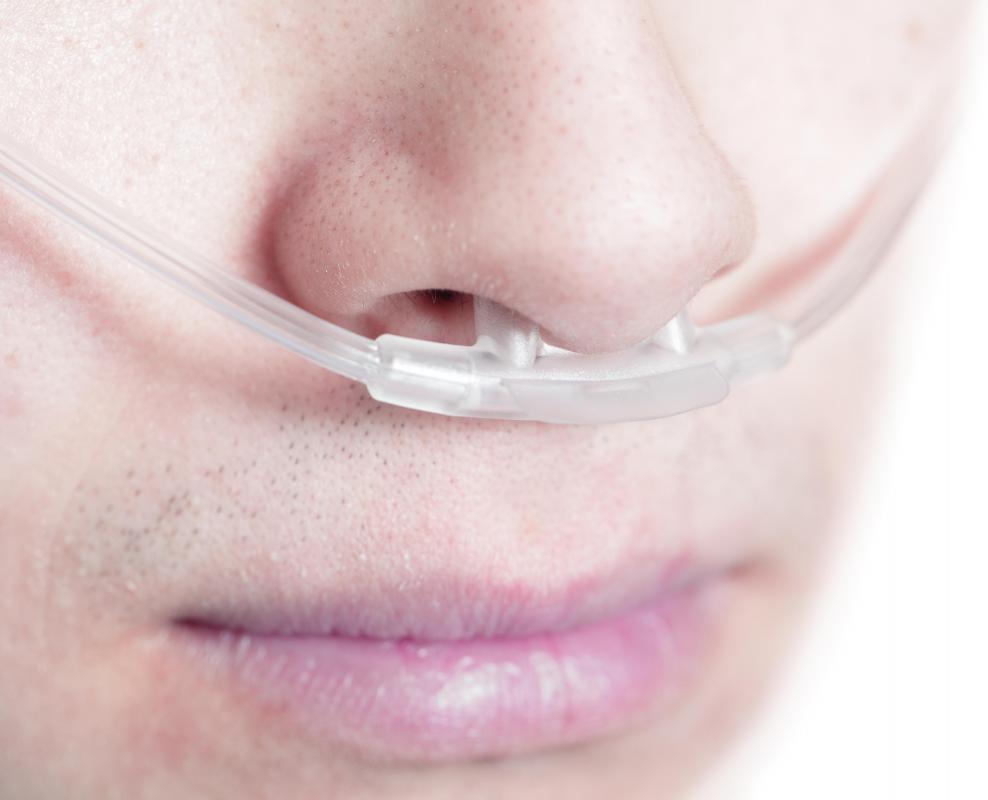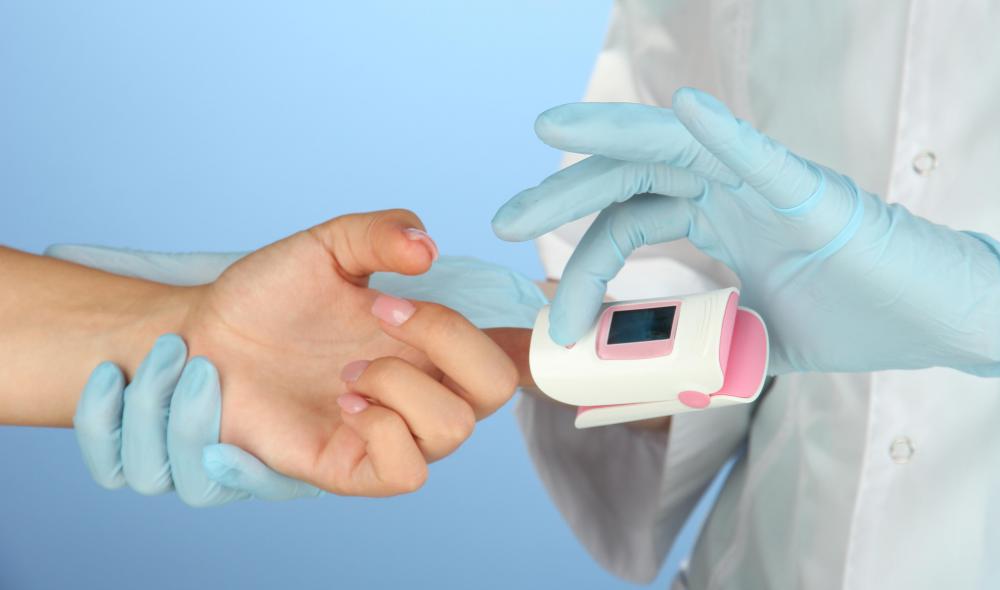At WiseGEEK, we're committed to delivering accurate, trustworthy information. Our expert-authored content is rigorously fact-checked and sourced from credible authorities. Discover how we uphold the highest standards in providing you with reliable knowledge.
How is Normal Oxygen Saturation Determined?
Normal oxygen saturation can be determined by using a device called a pulse oximeter, which was developed to measure a patient's blood oxygen level. The small machine is attached to the end of a finger or earlobe into which it sends different colors of light and then measures the amount of light that is returned. A pulse oximeter might be clipped to a toe when measuring for a pediatric patient. It then determines the blood oxygen saturation level and displays the reading on a small screen. If the reading displayed is between 96 and 100%, the patient is said to be normal.
A reading below 96% oxygen indicates a condition known as hypoxia, or an insufficiency in the supply of oxygenated blood reaching the body's tissues. Readings below 86% indicate significant hypoxia, and readings below 85% indicate severe hypoxia. Some oximeters use different wavelengths of light, which permits them to measure the level of carbon monoxide in the blood in addition to the level of oxygen.

Determination of normal oxygen saturation might be part of evaluating the effectiveness of a medical intervention, but healthcare providers cannot always rely on the readings of a pulse oximeter for an accurate oxygen saturation measure in a patient. Situations in which the device cannot be trusted include patients who are suffering hypoperfusion, more commonly known as shock, and victims of hypothermia, or lowered body temperature by exposure to cold, because not enough blood will be flowing through capillaries for a true reading to be obtained. Carbon monoxide poisoning also will produce readings that are higher than the actual oxygen saturation.

People who smoke have carbon monoxide poisoning, so normal oxygen saturation might not be able to be determined with a pulse oximeter when assessing or treating them. Excess movement and the presence of nail polish on a nail also can prevent accurate readings. The most accurate method of measuring oxygen saturation in a patient, many healthcare providers say, is by assessing the physical signs of hypoxia: cyanosis — a bluish color of the lips, nail beds, and fingertips — and cool, clammy skin. When these signs are seen, oxygen levels are likely low.
AS FEATURED ON:
AS FEATURED ON:

















Discuss this Article
Post your comments